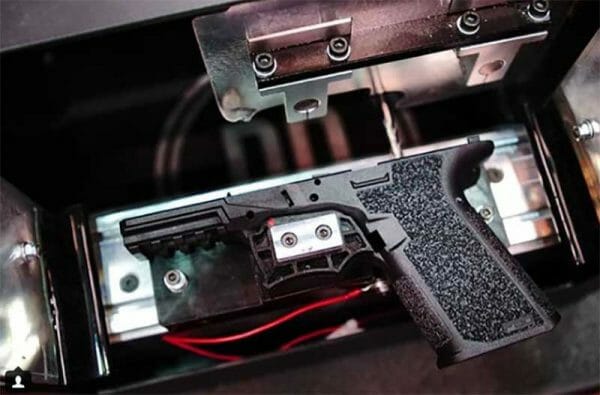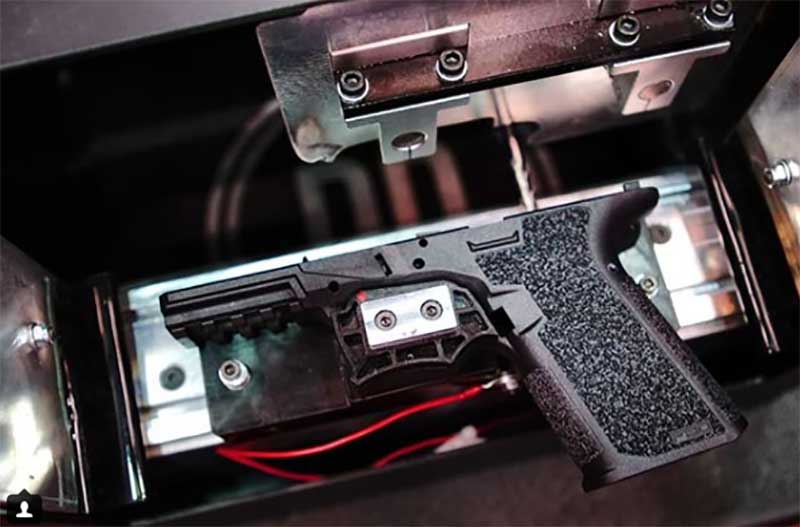
On August 20, 2024, Judge Adrienne Nelson, a United States District Judge in the District Court for the District of Oregon, issued an opinion claiming homemade guns are not arms as described in the Second Amendment. The opinion and order were in the case Montgomery v Rosenblum, which concerns the constitutionality of Oregon Bill HB 2005.
The bill bans homemade firearms unless they are assigned a serial number by an authorized agent of the federal government. The law makes it illegal to buy, sell, or possess an unfinished frame or receiver which does not have a federally assigned serial number.
Judge Nelson deviates from Supreme Court directives on the Second Amendment. First, the judge determines whether the conduct covered falls within the Second Amendment’s textual framework. In the Heller decision, Justice Scalia spent several pages defining all the words used in the Second Amendment. “Arms” are all bearable weapons that can be used for offense or worn for defense. This includes all firearms. Judge Nelson does not use this definition. From Justia.com:
Plaintiffs’ position cannot be squared with applicable law. In essence, plaintiffs would have this Court reduce the first prong to the most basic of inquiries: Does the regulation affect a firearm? There would be no assessment of any distinguishing features of the firearm—if it is a handgun, the right to keep and bear it is protected. Yet, the Second Amendment does not protect the right to keep and bear all firearms, regardless of its use and purpose. See Heller, 554 U.S. at 583. Indeed, in Heller, the Supreme Court stated that “the Second Amendment does not protect those weapons not typically possessed by lawabiding citizens for lawful purposes, such as short-barreled shotguns Id. at 625.
Judge Nelson takes Justice Scalia’s remarks about short-barreled shotguns out of context. Justice Scalia does not refer to the case in Heller but rather to what was decided in the 1939 Miller case. Scalia notes Miller should not be given much authority because of the paucity of the record. Here is the full sentence, which Judge Nelson truncated:
We therefore read Miller to say only that the Second Amendment does not protect those weapons not typically possessed by law-abiding citizens for lawful purposes, such as short-barreled shotguns.
The truncation of the sentence is misleading. It appears to be on the edge of deception. Here is what Scalia wrote in Heller about the Miller decision:
It is particularly wrongheaded to read Miller for more than what it said, because the case did not even purport to be a thorough examination of the Second Amendment.
Scalia goes on for another 424 words explaining why Miller should not be relied on to interpret the Second Amendment.
Judge Nelson’s entire argument rests on a fragment of a sentence from Heller. Justice Scalia never wrote that short-barreled shotguns were not protected by the Second Amendment. He only wrote the Miller case, as flawed as it was, based its argument on the claim (not supported by evidence) that short-barreled shotguns were primarily used by criminals. Mark Smith, a YouTube channel contributor at the Four Boxes Diner and an AmmoLand contributor, has an excellent video that considers Judge Nelson’s opinion. Here are some of Smith’s observations, as this correspondent understood them. From Mark Smith’s video:
- The Heller decision spends several pages defining the words used in the Second Amendment. There is no ambiguity in Heller that arms refer to all bearable weapons.
- Judge Nelson rejects the definitions settled in Heller. This is to move the questions about constitutionality from history and traditions to the text. Thus she shifts the burden of proof from the government to the plaintiffs in this case.
- Judge Nelson moves the “in common use” and the “dangerous and unusual” standards from the historical and traditional level to the textual level.
The Heller definition of arms was unambiguously reinforced by the unanimous Supreme Court decision in Caetano. The unanimous Supreme Court opinion in Caetano states the text of the Second Amendment covers all bearable arms, no matter when they were first invented or used. From Caetano:
The Court has held that “the Second Amendment extends, prima facie, to all instruments that constitute bearable arms, even those that were not in existence at the time of the founding,” District of Columbia v. Heller, 554 U. S. 570, 582 (2008) , and that this “ Second Amendment right is fully applicable to the States,” McDonald v. Chicago, 561 U. S. 742, 750 (2010) .
Judge Nelson used a textual sleight of hand to shift the burden of proof from the government to the plaintiffs. Then Judge Nelson uncritically accepts the State of Oregon evidence that homemade guns are commonly found at “crime scenes” or traced from “potential crime scenes” to show homemade guns are not “commonly used for lawful purposes”.
If a type of firearm is frequently found at crime scenes and the frequency is increasing, it is what you would expect if the type of firearm is commonly used for lawful purposes and is becoming more and more popular. Similarly, if the ATF and law enforcement agencies are noticing a type of gun at “potential crime scenes,” it may mean the agencies are reporting more of that type of firearm because of policy decisions to look harder for that type of firearm. Finding or reporting guns as found at crime scenes or traced from “potential crime scenes” does not mean the guns were used in crimes. Even if a type of gun is used in crime, it does not mean the type of gun is not “in common use for lawful purposes”.
As noted in the Teeter v Lopez decision about butterfly knives in Hawaii p.22:
Common sense tells us that all portable arms are associated with criminals to some extent, and the cited conclusory statements simply provide no basis for concluding that these instruments are not commonly owned for lawful purposes.
The evidence the prosecution offers that unserialized firearms are used for unlawful purposes is neither credible or statistically relevant. It has nothing to do with determining if the unserialized firearms are “primarily used for crime”. At most, it shows homemade guns are becoming more common in the general population. A serial number does not make a firearm less effective. It makes the firearm more subject to government control.
Judge Nelson’s decision may be overturned. The appeal will be to the Ninth Circuit Court of Appeals, historically hostile to the Second Amendment. In Teeter v Lopez, the three judge panel refused to fall for the textual trickery, and made the proper ruling. The Ninth Circuit decided to rehear the case, en banc. This has become the expected action of the Ninth for rulings favorable to the Second Amendment.
The question of homemade firearms will end at the Supreme Court. This term, the Supreme Court will hear Garland v. VanDerStok. VanDerStok is about whether the ATF can arbitrarily change to definition of “frame or receiver” to regulate homemade guns. That case is not precisely a Second Amendment case. It does not address the issue of whether the right to make your own firearm, without government interference, is protected by the Second Amendment.
Those who want to disarm the population argue it is much easier to make your own firearm today than it was in 1791. The First Amendment offers a direct analog. With computers and the Internet, articles or books are much easier to publish today than in 1791. The analogy is to claim that books and articles today may be censored on the internet because of changed technology. Homemade firearms are easier to make today. This does not mean the government has been granted the power to require serial numbers to register and control them.
About Dean Weingarten:
Dean Weingarten has been a peace officer, a military officer, was on the University of Wisconsin Pistol Team for four years, and was first certified to teach firearms safety in 1973. He taught the Arizona concealed carry course for fifteen years until the goal of Constitutional Carry was attained. He has degrees in meteorology and mining engineering, and retired from the Department of Defense after a 30 year career in Army Research, Development, Testing, and Evaluation.






